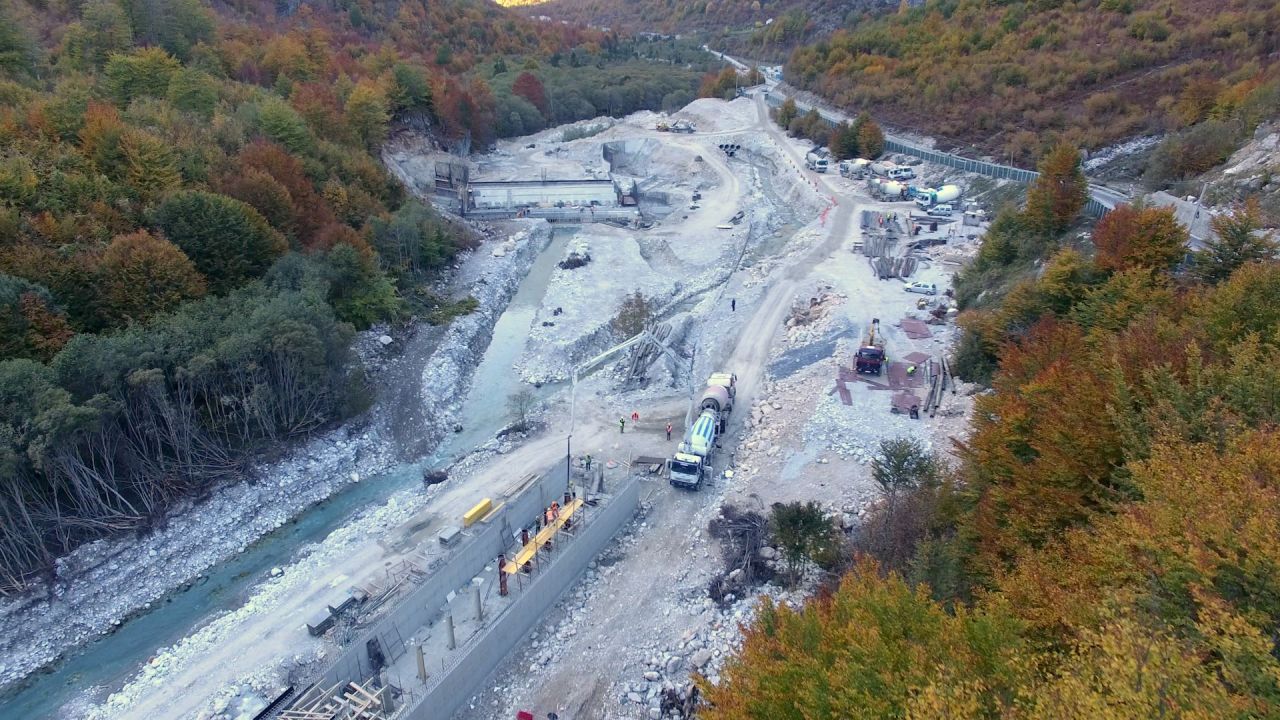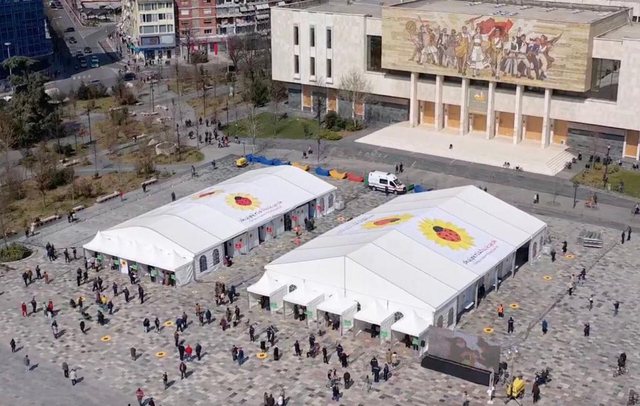

News
Residents in Mirdite Protest Over Proposed Hydropower Plant Construction
Residents in the villages of Sang and Thirrë i Mirditë protested on Friday against the construction of a hydropower plant.
They described its construction as “life-threatening”.
One protester said: “I am the oldest here. We lived with this water and this mountain because we were not appreciated. We sat by the mountain. Now they want to take us, and the water. Then they will take our souls. I am 87 years old “.
Residents have risen in protest after the start of works for the construction of the hydropower plant in the area of Mirdita.
They claim that the company “Sang1” has falsified the signatures in the legal documents to obtain the permit for the construction of the hydropower plant in Thirrë-Sang, and the drinking water factory in Krazhna.
“We take water 3 km and 200 m from the Qarri stream to Sang and from ’90 until today we have half the land without irrigation because we have no water. They are taking what little water we have and we will be left with nothing “said a resident.
They stated that they have filed a lawsuit with the prosecutor’s office for forgery of signatures and a complaint in the municipality of Mirdita.
This is the latest in a series of protests and lawsuits against the construction of HPPs in Albania. In Valbone, citizens have been protesting against the construction of several HPPs that they say will destroy the local area and the livelihoods of those that live there.
They have also made complaints about the forgery of signatures and the misappropriation of names and ID numbers on documents submitted to the court.
In an interview with Exit, CEO of Patagonia Ryan Gellert said that hydropower is not green, is not sustainable, and contributes to the extinction of flora and fauna and the displacement of humans.
He added that the concept of HPPs being environmentally friendly is outdated and “the negatives outweigh the benefits 100%.”
https://exit.al/en/2021/04/02/144844/
Albania Speeds Up Vaccination: 90k People in 5 Days, 155k since January
In the last five days only, Albania has vaccinated 90 thousand people, which amounts to 150 percent of those vaccinated in the previous three months.
Minister of Health Ogerta Manastirliu announced on Thursday that 155,463 have been vaccinated in total. She added that half of vaccine doses received so far by the government have been administered.
The government launched the mass vaccination campaign one month ahead of the April 25 elections, while it had kept the process slower during the previous three months.
The speeding up was announced after the government purchased 192,000 doses of the Sinovac vaccine from a Turkish company in late March, which was roughly twice the number of doses received before.
Prime Minister Edi Rama has promised to vaccinate 500 thousand people in two months.
Albania has received about 290 thousand vaccine doses by Sinovac, Pfizer, AstraZeneca and Sputnik V.
It is now vaccinating people over 70, following priority groups of medical staff, teachers, and those over 80.
https://exit.al/en/2021/04/01/albania-speeds-up-vaccination-90k-people-in-5-days-155k-since-january/
EBRD gives €9.1M boost to Albanian floating solar farm
The European Bank for Reconstruction and Development (EBRD) has provided a €9.1 million loan for the construction of 12.9MW floating solar farm in Albania.
The farm will be the first floating solar photovoltaic (PV) plant of this size in Albania and the Western Balkans, according to EBRD.
The power plant will be built on the Vau i Dejës hydropower plant reservoir, which is managed by Korporata Elektroenergjitike Shqiptare (KESH).
The EBRD loan will be provided to a special-purpose vehicle owned by KESH and established for the purpose of the construction of the project.
Structured as a project finance loan and provided on a commercial basis, the EBRD loan is the first such financing by an international financial institution and will contribute to the commercialisation of KESH, one of Albania’s biggest state-owned utilities.
KESH owns and operates three large hydropower plants with a total capacity of 1,350 MW that account for about 70% of Albania’s domestic generation. The new solar PV plant will contribute to making KESH more resilient to climate-induced risks in relation to hydrology and seasonality, according to EBRD.
Francesco Corbo, EBRD Regional Head of Energy for the West Balkans, said: “The project is remarkable because of its innovative technology, positive environmental impact and commercial logic. It also has the potential to be replicated in the broader Western Balkans region, which has many hydropower reservoirs. This is our first opportunity to finance floating solar PV technology and we look forward to many similar projects in the future”.
The project also aligns with Albania’s broader ambition to develop its solar capacity, which has resulted in two successful auctions supported by the EBRD and delivering highly competitive tariffs: the 140MW Karavasta project, and the 100MW Spitalle project.
The EBRD also mobilised a €315,830 for the project preparation support, including from the green economy project preparation and implementation framework financed by the Austrian government (the DRIVE Fund) and from the TaiwanBusiness-EBRD Technical Cooperation Fund.
Besjan Kadiu, CEO of KESH, added: “The project is of special importance for KESH. It positions the company as a contributor to Albanian and global initiatives to invest in renewable generation using innovative photovoltaic technology that is compatible with hydropower generation.
“Although modest in size, the project holds opportunities not only for the further development of public generation assets on a strong commercial, technical and environmental basis, but also showcases the know-how that is required to operate a hybrid hydro-photovoltaic system”.
https://www.offshore-energy.biz/ebrd-gives-e9-1m-boost-to-albanian-floating-solar-farm/










